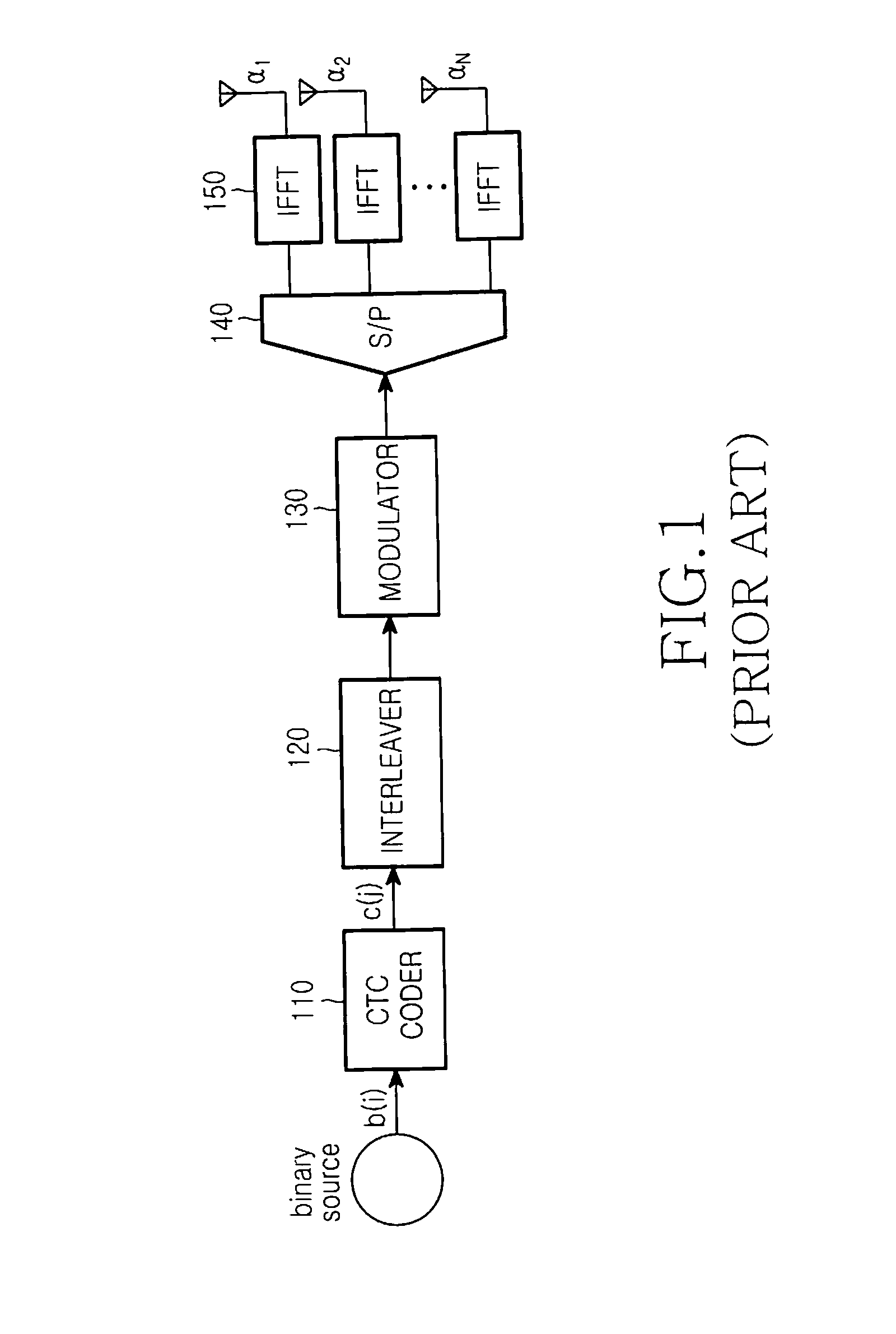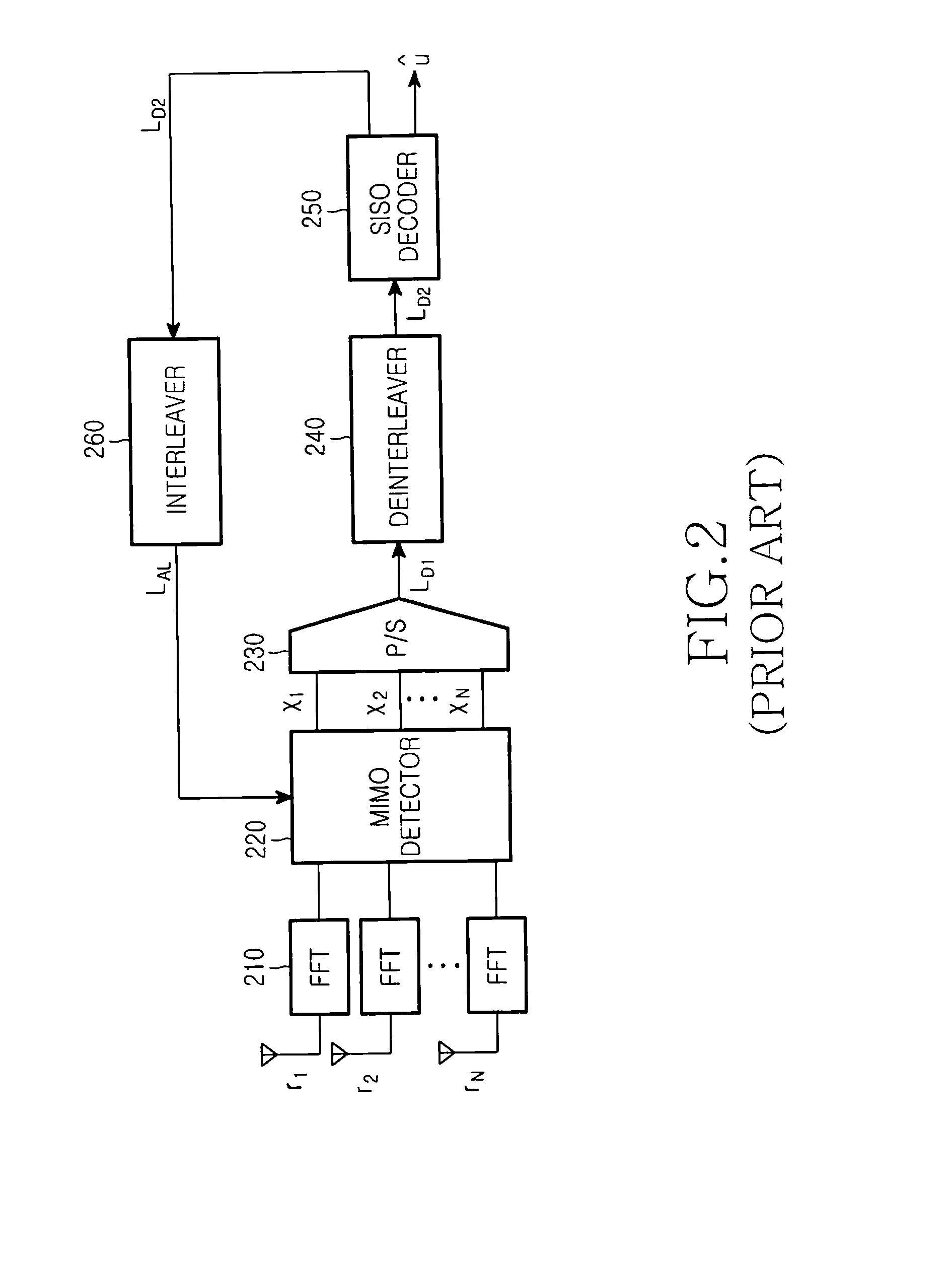Apparatus and method for correcting error in a multiple-input multiple-output communication system
a communication system and multiple input technology, applied in the field of appratus and method for correcting errors in the multi-input multi-output communication system, can solve the problems of increasing hardware complexity and time delay, unable to decode the corresponding frame using the crc stopping criterion scheme, and inability to realize the actual realization of the frame, etc., to achieve efficient stopping iterative decoding
- Summary
- Abstract
- Description
- Claims
- Application Information
AI Technical Summary
Benefits of technology
Problems solved by technology
Method used
Image
Examples
Embodiment Construction
[0067] Preferred embodiments of the present invention will now be described in detail with reference to the annexed drawings. In the following description, a detailed description of known functions and configurations incorporated herein has been omitted for clarity and conciseness.
[0068] The present invention considers a Turbo-BLAST MIMO system having N transmission antennas and M reception antennas.
[0069]FIG. 1 is a diagram illustrating a structure of a transmitter for a MIMO system to which the present invention is applicable.
[0070] In FIG. 1, b(i) indicates information bits, where iε{1, . . . , L} and L denotes the number of information bits in a frame. The bits c(j) coded in a Convolutional Turbo Code (CTC) coder 110, where jε{1, . . . , L / R} and R denotes a code rate, are interleaved in an interleaver 120, modulated in a modulator 130, and divided into sub-streams in a Serial-to-Parallel converter (S / P) 140. Thereafter, the sub-streams are subject to Inverse Fast Fourier Tra...
PUM
 Login to View More
Login to View More Abstract
Description
Claims
Application Information
 Login to View More
Login to View More - R&D
- Intellectual Property
- Life Sciences
- Materials
- Tech Scout
- Unparalleled Data Quality
- Higher Quality Content
- 60% Fewer Hallucinations
Browse by: Latest US Patents, China's latest patents, Technical Efficacy Thesaurus, Application Domain, Technology Topic, Popular Technical Reports.
© 2025 PatSnap. All rights reserved.Legal|Privacy policy|Modern Slavery Act Transparency Statement|Sitemap|About US| Contact US: help@patsnap.com



